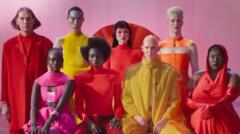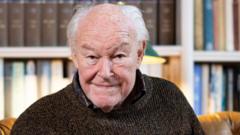
Jaguar is embarking on the most significant transformation in its 102-year history, launching a bold rebranding strategy that has sparked widespread debate and controversy. The company has unveiled a new logo and a provocative teaser video ahead of its transition to an electric-only brand in early December.
The 30-second advertisement features models in vibrant, extravagant outfits displaying the new logo, conspicuously absent of any actual cars, traditional automotive imagery, or the brand’s iconic big cat motif. This unconventional approach has generated mixed reactions, with notable figures like Tesla CEO Elon Musk questioning the ad’s purpose, and social media users expressing skepticism and criticism.
Despite the backlash, Jaguar appears to have intentionally courted controversy. A company spokesman stated they “had to break rules and do something that would get us cut thru,” suggesting the polarizing response is part of a calculated marketing strategy. Former Formula 1 driver Martin Brundle noted the genius of generating conversation about the brand at a time when they’re not actively producing cars.
Branding experts like Lee Rolston from Jones Knowles Ritchie explain that rebrands typically occur when a company wants to shift its business strategy – which aligns with Jaguar’s move to electric vehicles. Rolston suggests that the company might have deliberately engineered this provocative response to generate buzz and attention.
The rebrand represents a significant departure from Jaguar’s traditional image, which has been associated with older, affluent white men. Erin Baker from AutoTrader argues that the brand has been “languishing in sales for years” and requires fundamental change. She believes the new approach aims to shed its outdated perception and appeal to a broader, younger demographic.
Historically, Jaguar has been the weakest performer within the Jaguar Land Rover group, with Range Rover and Defender driving higher profits. The radical rebranding could be seen as a last-ditch effort to revive the brand’s relevance and appeal.
However, the strategy is not without risks. Baker points out the challenges of transitioning to pure electric vehicles in 2026, especially when electric car sales have stagnated among private buyers worldwide.
The rebrand draws inspiration from the company’s founder, Sir William Lyons, who believed a Jaguar “should be a copy of nothing.” This philosophy seems to underpin their current unconventional approach.
Other brands have responded with humor, with Specsavers and Aldi creating witty social media responses to the new branding. Meanwhile, branding experts like Keith Wells suggest giving the brand time and respect to see how the strategy unfolds.
Ultimately, the success of Jaguar’s bold rebranding remains uncertain. The company remains confident, responding to critics with cryptic messages like “soon you’ll see things our way” – leaving the automotive world eagerly anticipating their next move.








